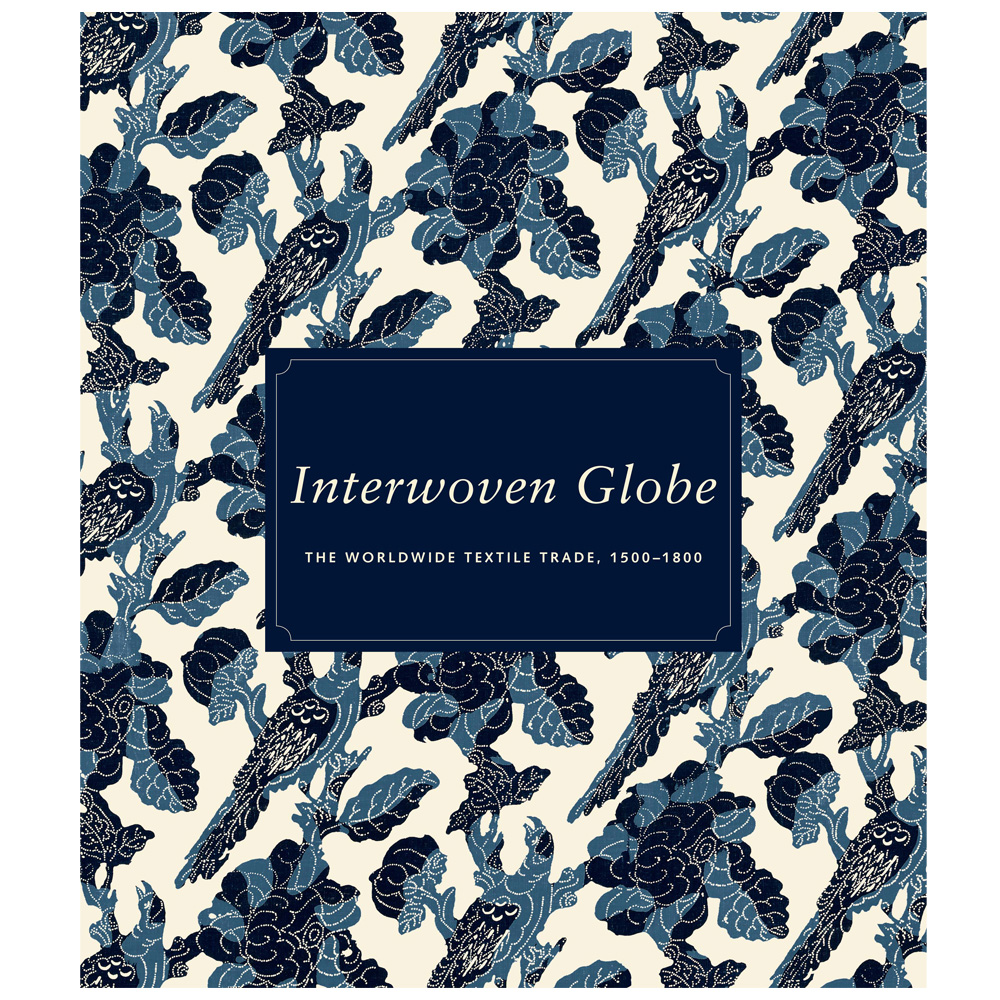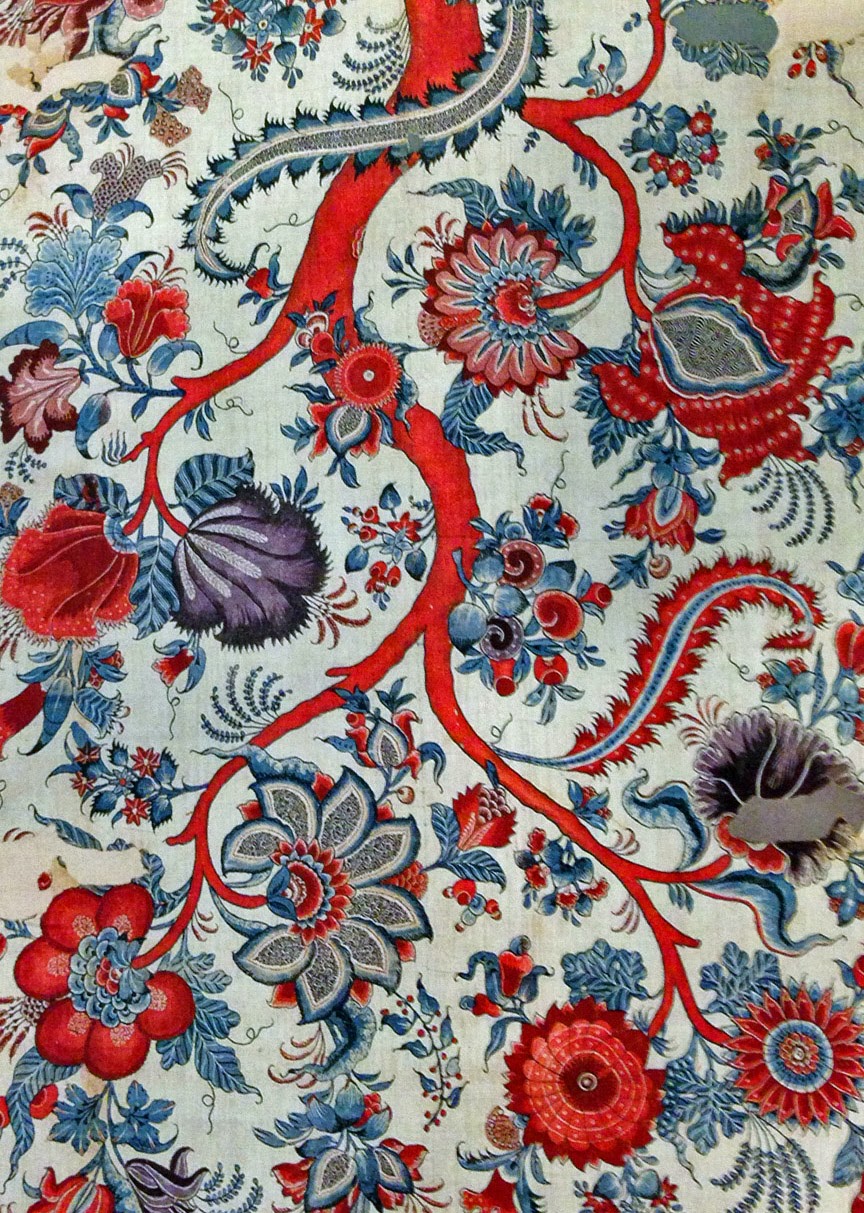For blog three I am compiling a group of texts that I envision using with my ideal student group, which would be a college level course, ideally a study abroad trip and studying the way textiles aid in accessibility and understanding of art around the world. I plan to discuss texts that span a variety of reading levels, from academic essays in a book by the Modern Museum of Art, to a Gujarati textile that includes no words but symbolic images to that culture. I will also be including a video of the women of Gee’s bend as well as a podcast telling stories of textiles along the silk road. I choose the larger text set as I feel it appeals to and is accessible to a wide variety of learners. From my print text example which scored a mean of grade level 20 to my textile example which does not include words but symbolic animals, there is a wide range of types of texts but, but they also enhance and compliment each other. The list of the complete text set is as follows.
Indigo, The Color That Changed the World by Catherine LeGrand
The Silk Road and Ancient Trade Video
Traditional Weavers of Guatemala, Their Stories, Their Lives
https://www.amazon.com/Traditional-Weavers-Guatemala-Their-Stories/dp/0983886075
Stitchin’ and Pullin’ a Gee’s Bend Quilt
Balotra, The Complex Language of Print
The three texts I choose to study were an essay from Interwoven Globe, a video on the Gee’s Bend quilters of Alabama and a textile from India called a Ganesh Sthapna. I had a really hard choosing the textiles for a few reasons, but I think I went with the three that best represented the set as a whole.
IG Vocab and Readability: (print)
Interwoven Globe is a selection of essays on the textile trade, it is the catalog of an exhibit from the Metropolitan Museum of Art in New York City. It scored at a high level in the Storytoolz readability test ( quantitative) And the link to that is below. I focused on the chapter Global Colors pages 120-135.
Vocabulary one might need:
Dyestuffs, saturated, textile, intersected, global exchange, ingenuity, Age of Enlightenment, commodities.
A text like this is so rich in content but is a high reading level and also could be seen as dry perhaps. I chose it because it comes from an excellent historical source and paired alongside pictures and artifacts from different times in history that I believe to be from an excellent source. I also think that it could be appreciated by a variety of subject area observations, science, geography, history and textile study to name a few. However as it is a dense text, an activity with high reader engagement would be most advised, perhaps reading it and acting aspects of it out or doing a small dye workshop or demonstration using the dyes mentioned here and a globe, or plotting textile samples out along a map.
StoryToolz Readability Results

Gee’s Bend: Vocab and Readability ( Culturally Relevant)
Vocabulary one might need:
House top, layer top, slavery time quilts, cotton gin, quilt, thimble, tribulation
StoryToolz Readability Resultsquilters


I chose the video because I think first of all that it is a beautiful moving history. I think it is culturally relevant in a few ways. One, for my students specifically, it ties in to many of their ancestral history, and I think the way the women talk about their work ethic and creating something with very little is encouraging. Secondly, as Gee’s Bend quilts have now been “discovered” by the Art World, I think first hand documentation and hearing them describe the quilts in their own way is important. You can find information about these women and the history of the work in many a museum catalog and art journal, however it is not uncommon to have them portrayed in a way that is through the lens of the critic or historian, which can include lots of outside inferences and not always facts. I also appreciate the story of these women and as the readability results show, the level of the video is around a 2.3, so not highly challenging technically, but it is important content and one that could be deeply impactful to many people. The women discuss slavery and life coming up in the south. I think this text is a great example of Reader and Task, the task being to better understand the lives of people as well as seeing how different types of people can evolve as artists. One interesting aspect of using Storytoolz for this piece was that the women do speak in a vernacular that could possibly be a challenge for some people to understand, I have watched the video a few times to try and dig in to what they are saying, but typing the words in s I hear them doesn’t always reflect an accent of dialect and I think that can affect the qualitative reading of the text. For this text I might have students watch it and study the quilts, I might have them listen to the parts specifically where the women got their materials and ideas, and have them make their own quilt square, in fabric or nice paper, and embedding words into them.
Textile: Vocab and Readability. ( Multimedia)

The Textile has no real way of quantitatively assessing its readability, but I believe you can do a reading of it qualitatively. Although it is images, it still has layered meaning and nuance depending on the reader. For example if you are someone from India or specifically Gujarat the area of India this textile is from, the shape, animals and colors depicted will most likely hold a different significance to you than someone who does not have a cultural or historical connection to it. With this text ( tile) I think I would have students first talk about the animals and colors they see and make notes of it. I think I would use a group discussion to brainstorm ideas about why these animals are on the textile, their importance, and what types of colors there are. I might then share a bit about the use of Ganesh Sthapna’s and eventually have them write there own stories, first about the characters depicted on the textile sand then incorporating animals or things that are important to them, like a pet.
Some vocabulary for this text that I might share with the students is:
Ganesha, Sthapna, Auspicious, Gujarat, India, sacred, Hinduism, puja, deity, significance
I still see many things that can be learned and studied via textiles so I have a difficult time narrowing down what to focus on which is not a terrible problem to have Still I want to make sure the texts are concise especially when you are using non traditional texts examples. Secondly, it was a challenge to separate my text set teaching intentions from my current students, as it is a different focus and I am usually researching with them in mind. I am still trying to find the balance of finding culturally responsive an engaging artists for my students, and still exposing them to a variety of examples and cultures. My student demographic is ninety-nine percent African American and I have tried to find things that interest and engaged them, however I think I have become too narrow in my focus ( in my own classroom) and these texts could be used as great sampling of other cultures and artist process.

I like that first piece, is it from India? It looks like a Ganesha figure in the middle?
LikeLiked by 1 person
Hello! Yes it is! It is a very special antique and I love that it has Ganesha, cows ( sacred in India) and peacocks ( also important in India) along with some traditonally vibrant colors. It is a special textile called a Ganesha stapna and used as an auspicious piece in homes.
LikeLiked by 1 person
Very interesting, Kelly! I was wondering if you think you could teach your art to middle or high school students, since you mentioned your ideal class would be a college course? Is there a reason you think the content would be too advanced for younger students?
LikeLiked by 1 person
HI Jordan! Thank you for your comment! I know I haven’t shown all the texts yet but I suppose I thought one of the text would be too challenging (not this textile but some of the podcast content) , but I will post the quantitative results soon, I think it was also that I was hoping to teach this in tandem with actual travel, like as a study abroad curriculum but that coudl be possible for high school as well. Thank you for your questionign and you are right I will reconsider it!
LikeLiked by 1 person
Hey Kelly.
I am very intrigued with your class. Perhaps you could take students on a trip down the Silk Road. The Silk Road does not only include the overland route but the high sea’s as well. Somalia and Egypt were both stops on sea and land respectively and heavily involved in the trade from Western Civilization to Eastern. Between are so many cultures. This would definitely work within a study abroad course, it would take about a semester I’d say 3 months or more even to travel. But students would study a semester learning the art, architecture, cultures along the Silk Road. That would be amazing!
https://en.wikipedia.org/wiki/Silk_Road
What about the kings of Mali? There was a rich culture in Africa before colonization.
https://en.wikipedia.org/wiki/Mali_Empire
One of their King’s, Mansa Musa, was said to be the richest of all men of all time.
http://www.nydailynews.com/news/world/king-mansa-musa-named-richest-history-article-1.1186261
I guarantee there is art that would relate well with your students. This is also the area where the majority of African slaves came from eventually. There is a rich culture buried deep within all the African cultures we have now. A proud history that needs to be uncovered. I don’t know if you can add a class to your repertoire but there are many great African historians at UWM. I learned much from Professor Marcus Filpello myself.
LikeLiked by 1 person